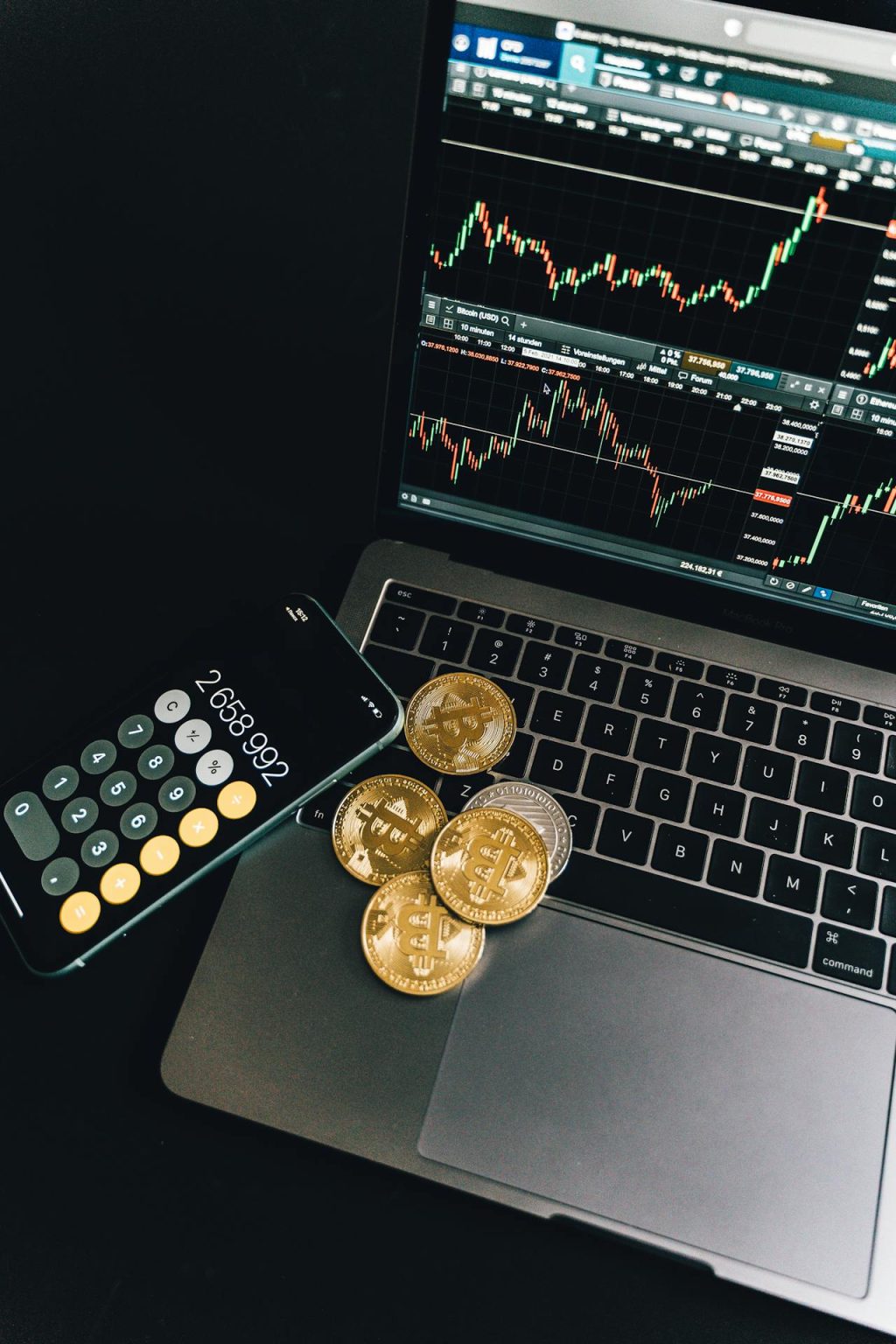
Cryptocurrency has taken the world by storm, and with it comes a fascinating process known as mining. If you’ve ever wondered how people earn digital coins from thin air, you’re not alone. Mining crypto isn’t just for tech wizards; it’s an accessible venture that many are diving into today.
But what does it really involve? Is it worth your time and investment? With so much buzz around Bitcoin, Ethereum, and other altcoins, understanding how do you mine cryptocurrency can unlock new opportunities for anyone looking to join this digital gold rush.
In this guide, we’ll break down everything you need to know about cryptocurrency mining—from the basics to advanced methods. Whether you’re a curious beginner or someone considering setting up your operation, we have insights that will help demystify this intriguing aspect of the crypto sphere. Let’s dig in!
How do you mine cryptocurrency?
Mining cryptocurrency involves validating transactions and adding them to a blockchain. When you successfully mine, you receive rewards in the form of new coins or transaction fees. This process helps maintain the integrity and security of the network.
To start mining, you’ll typically need to choose a cryptocurrency that uses a proof-of-work algorithm. Bitcoin is the most well-known example, but many other options exist too. Each coin has its own unique requirements and potential profitability.
Once you’ve selected your preferred currency, it’s time to set up your mining operation. You’ll need specialized hardware designed for computational tasks—think ASICs for Bitcoin or GPUs for Ethereum and altcoins. Proper cooling solutions are also crucial since these machines can generate significant heat.
Joining a mining pool can enhance your chances of earning rewards more consistently. By collaborating with others, miners combine their resources and share profits based on contributions made towards solving complex mathematical puzzles.
Understanding Cryptocurrency Mining
Cryptocurrency mining is a fundamental process that fuels the blockchain network. It involves solving complex mathematical problems to validate transactions and secure the network. Miners use powerful computers to perform these calculations, competing with each other for rewards in the form of cryptocurrency.
At its core, mining ensures transparency and trust within decentralized networks. Each solved problem adds a new block to the blockchain, maintaining an unchangeable record of all transactions. This decentralization makes cryptocurrencies resistant to fraud and manipulation.
The energy-intensive nature of mining has sparked debates about environmental impact. As more people join this digital gold rush, competition increases, leading miners to seek out efficient solutions for their operations.
Understanding how mining works can help you appreciate its role in shaping the future of finance. Embracing this technology opens doors to potential opportunities while navigating challenges inherent in this rapidly evolving landscape.
Basics of Cryptocurrency Mining
Cryptocurrency mining is the process of validating transactions on a blockchain network. Miners compete to solve complex mathematical problems, which helps maintain the integrity and security of the digital currency. This effort ensures that all transactions are legitimate and prevents double-spending.
When a miner successfully solves a problem, they add a new block to the blockchain. In return for their work, miners receive newly minted coins as well as transaction fees from users sending cryptocurrencies. This creates an incentive for people to participate in mining.
The difficulty level of mining varies based on several factors, including network activity and overall demand for the cryptocurrency being mined. As more miners join the network or technology improves, these challenges can become increasingly hard.
Understanding how this process works is crucial for anyone looking to dive into cryptocurrency mining. It’s not just about having powerful hardware; it requires knowledge of algorithms, market trends, and energy consumption considerations too.
Equipment Required for Cryptocurrency Mining
To start mining cryptocurrency, you need the right equipment. The most crucial component is a powerful computer. This can be either a dedicated mining rig or a high-performance gaming PC. Mining rigs are often built with multiple graphics processing units (GPUs) to maximize efficiency.
Graphics cards play an essential role in mining various cryptocurrencies like Ethereum. For Bitcoin, specialized hardware known as ASICs (Application-Specific Integrated Circuits) offers the best performance. These machines are designed solely for mining and outperform traditional computers significantly.
In addition to hardware, you’ll also need software that connects your mining operation to the blockchain network. Popular options include CGMiner and EasyMiner, which help manage operations and monitor performance.
Don’t forget about cooling solutions! Mining generates heat, so proper ventilation is vital to keep your equipment running smoothly without overheating or damaging components over time. Investing in adequate cooling systems ensures longevity and better efficiency for your setup.
Setting Up Your Mining Operation
Setting up your mining operation requires careful planning. Start by choosing the right location. A cool and dry space is ideal to keep your equipment running efficiently. Make sure there’s adequate ventilation, as mining rigs can generate significant heat.
Next, you need to select a reliable power source. Mining consumes a lot of electricity, so consider options that can help reduce costs over time. Solar panels or other renewable energy sources could also be beneficial in the long run.
Once your location and power are sorted, it’s time to arrange your hardware setup. Organize your mining rigs for optimal airflow and accessibility. Proper cable management is key; tangled wires can lead to overheating or connectivity issues.
Don’t forget about software installation! Choose appropriate mining software that aligns with the cryptocurrency you plan to mine. Setting everything up correctly will ensure smooth operations and maximize potential profits from your efforts.
Different Mining Methods
Cryptocurrency mining isn’t one-size-fits-all. Various methods cater to different needs and resources. The most common method is Proof of Work (PoW), where miners solve complex mathematical problems to validate transactions on the blockchain. This process requires significant computational power, making it competitive and energy-intensive.
Another popular approach is Proof of Stake (PoS). Instead of relying on heavy computations, PoS allows miners to create new blocks based on the number of coins they hold and are willing to “stake.” This makes it more environmentally friendly while still maintaining network security.
Cloud mining has gained traction as well. It allows users to rent mining power from a third party instead of purchasing hardware themselves. This can lower entry costs but comes with its own risks, including potential scams or lack of transparency.
There’s hybrid mining that combines aspects from both PoW and PoS systems for added flexibility and efficiency in transaction validation. Each method has its pros and cons, appealing to various types of investors.
Cryptocurrency Mining Security
Cryptocurrency mining comes with its own set of security risks. As miners, you are responsible for protecting your hardware and digital assets from various threats. Cyberattacks, such as hacking attempts or malware infections, can lead to significant losses.
It’s essential to keep your mining equipment secure. Regularly update software and employ strong passwords. Make use of firewalls and antivirus programs to safeguard against unauthorized access. Additionally, using a Virtual Private Network (VPN) can enhance privacy when connecting to the internet.
Another critical aspect is securing your cryptocurrency wallet. Hardware wallets offer an extra layer of protection compared to online wallets. Always back up your wallet information in multiple locations and remain vigilant against phishing scams targeting crypto users.
Staying informed about emerging threats in the cryptocurrency space will help mitigate risks associated with mining activities. By implementing robust security measures, you not only protect your investments but also contribute positively toward the entire ecosystem’s integrity.

I’m an enthusiast of digital finance and online entertainment, with extensive experience in the worlds of cryptocurrency, sports betting, and casino gaming. My mission is to provide readers with reliable information to help them make informed decisions in the realm of online gambling and digital investments. On this blog, I share the latest trends, platform reviews, and tips for safe and responsible gaming.
More Stories
What is the best cryptocurrency wallet?
Is cryptocurrency dead?
How to create a cryptocurrency?